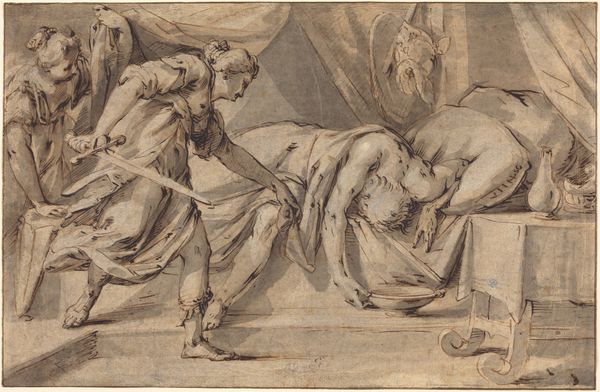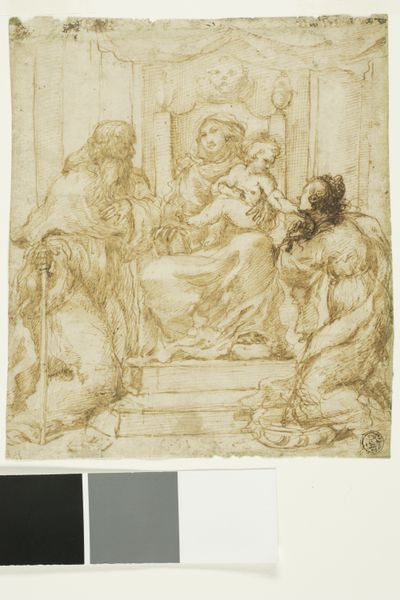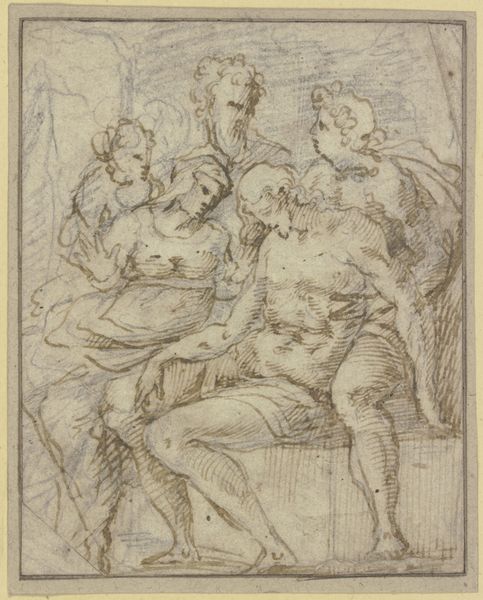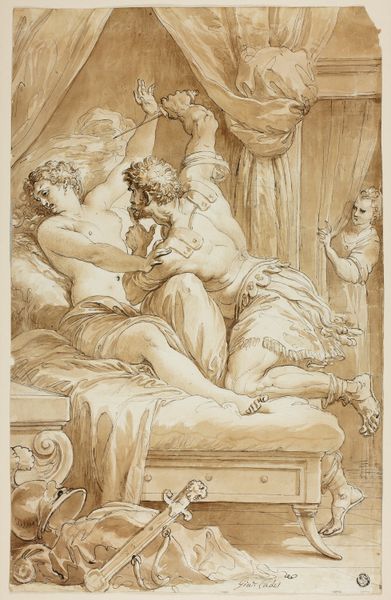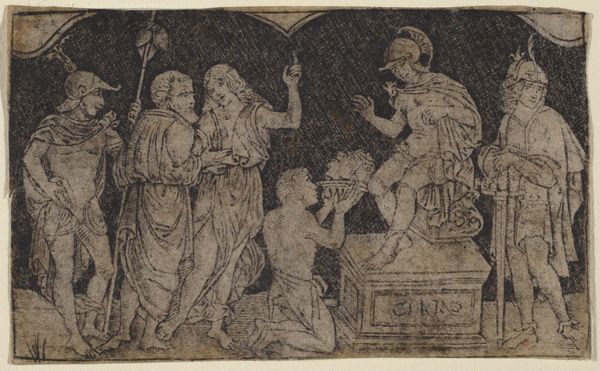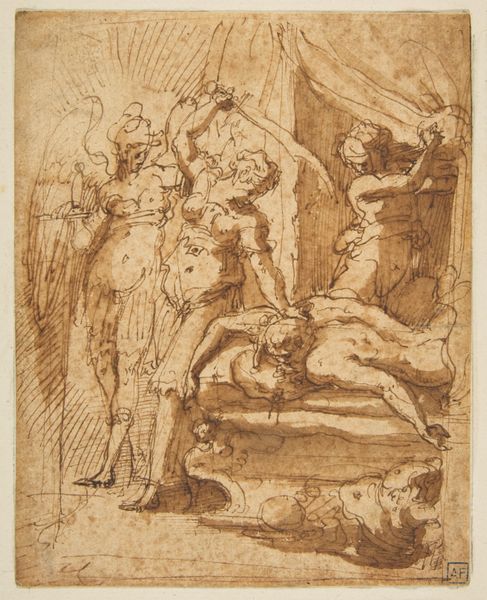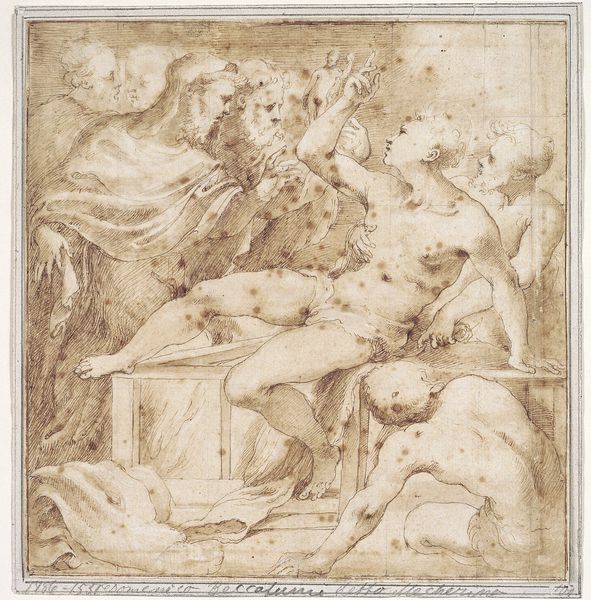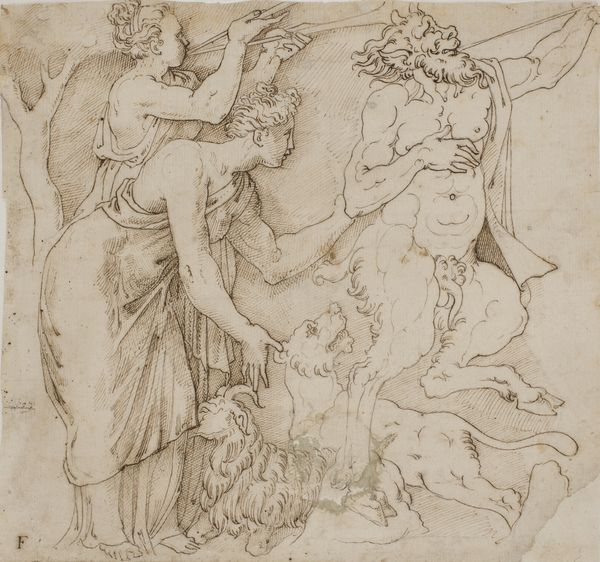
Olympias, Mother of Alexander, Visited by Zeus in the Guise of a Serpent 1595 - 1599
0:00
0:00
drawing, print, paper, ink, pencil, pen, charcoal
#
drawing
#
allegory
# print
#
charcoal drawing
#
figuration
#
paper
#
11_renaissance
#
ink
#
pencil
#
pen
#
charcoal
#
history-painting
#
italian-renaissance
#
nude
Dimensions: 110 × 167 mm
Copyright: Public Domain
Curator: Looking at Andrea Boscoli's intriguing drawing from the late 16th century, we see the scene titled "Olympias, Mother of Alexander, Visited by Zeus in the Guise of a Serpent," currently held at the Art Institute of Chicago. Editor: The drama is immediate! There's such a striking contrast between the calm, almost bored, figure of Olympias and the hysteria of the women around her. The enormous serpent seems to embody the uncanny, disrupting domestic space and female community. Curator: Absolutely. The serpent is critical to understanding the cultural underpinnings of divine power. Zeus transforming into an animal – it echoes older mythological narratives and speaks to the power dynamics inherent in the story. Serpent symbolism connects to creation, fertility, and even hidden knowledge within many cultures. Editor: Yes, but it also highlights the precarious position of women, then and now, as passive vessels in narratives of power and male ambition. Olympias has no agency; she simply receives the divine seed, making this about lineage and patriarchal power. Curator: I see it more about transmuting earthly power to divinity. While you are right that Olympias appears passive, I’m more fascinated by the divine meeting of Zeus with Olympias which gave birth to Alexander the Great. We might consider that such images aimed to inspire leadership, creating almost propaganda rooted in classical myths and values. Editor: A complicated propaganda, then! Even within this idealization, there’s palpable unease. The composition isn't celebrating; it’s showcasing disruption, perhaps hinting at the anxieties surrounding power, legitimacy, and even female sexuality. It’s interesting the women flee the space and it leaves us asking "why are they so scared"? Curator: That’s a valuable counterpoint, for in visual narratives of this era there exists a moralizing lesson within every allegory; it serves to question, inspire and warn its observers to pursue the heroic in virtue, strength, and mind. The fact that such questions may linger with you here says something about the artist's skill in visualizing them. Editor: A powerful intersection of history, gender, and mythology then, as potent now as it was then, making it truly relevant.
Comments
No comments
Be the first to comment and join the conversation on the ultimate creative platform.


